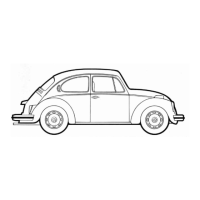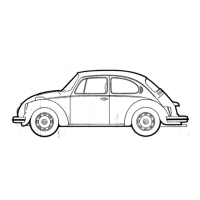Crankcase Ventilation
Through crankcase ventilation harmful emissions from the
engine crankcase are not permitted
lo
reach the outside
atmosphere. These emissions are recirculated to the
air
cleaner. From here the emissions mix with the air/ fuel
mixture
in
the intake system and are later
burned
in the
engine
(see illustration).
Exhaust Gas Recirculation (EGR)
Some of the exhaust gas from the engine is diverted before
it enters the muffler. This gas is routed back into the intake
manifold.
An exhaust gas recirculation valve controls the
flow to the intake manifold. The exhaust gas recirculated
Into
the combustion chambers of the engine helps lower the
formation of oxides of nitrogen (NOx) during the combustion
process (see illustration).
/
16
B12-620
Catalytic Converter (where applicable)
The catalytic converter
is
an efficient "clean up'" device built
into the exhaust system of your car lo further help reduce
engine pollutants. Harmful carbon monoxide and hydro-
carbons in the exhaust gas are chemically changed into
harmless carbon dioxide and water vapors before they pass
to the outside through the muffler (see illustration).
The use of unleaded
fuel,
however, is critically Important
for the life of the converter. Deposits from leaded gasolines
and fuel additives containing sulfur, zinc, nickel or barium
will ruin the catalyst and make
it
ineffective as an emission
clean-up device.
Therefore,
only unleaded gasoline without
harmful additives must be used.
Emission Control System
1 - Air cleaner
2-Air
metering
device
3 - Throttle valve unit
4-
Intake manifold
5 - Exhaust
mamlolds
6 - Heat exchangers
7-Catalyst
(Catalytic
converter)*
8-Muffler
9-EGR-fillei-
10-EGR-valve
11 —
Auxiliary air valve
12-
Decel.
control valve
13-Distributor
14-Fuel
injection valves
15
- Crankcase ventilation
16-
Indicator light for EGR
* where applicable
Exhaust and air lines
Control lines (vacuum)
63

